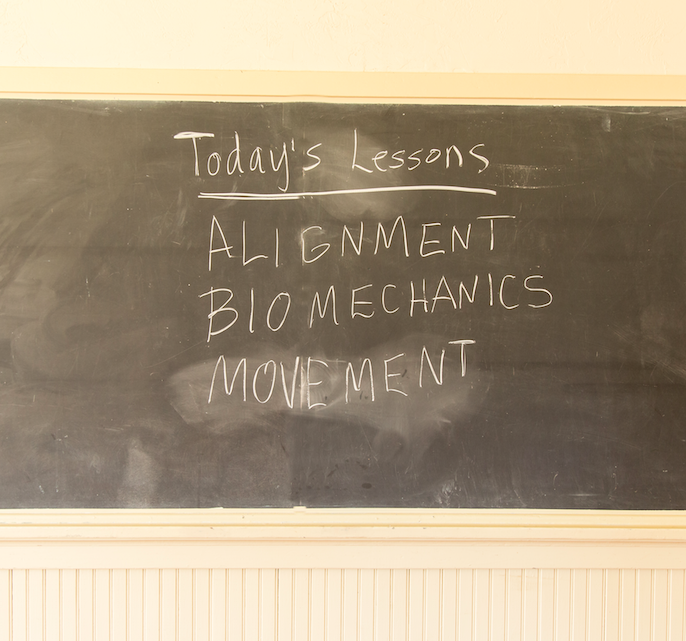March 2019 Update from Sara: "Lee asked me to tell you that he hasn't written a single referral yet this year and his test scores in December were about a full standard deviation higher than expected. We'll see what the results are when his students take their final standardized test this spring! He was also able to get rid of all the desks and replace them with tables because his students stopped using them."
In July 2018, I received a note from Sara, who has been working with her husband, teacher Lee, to make his classroom movement friendly. I’m inspired by those doing the tough work to integrate more movement within traditional spaces and institutions, and I hope you are too.
From Sara:
My husband is a high school English teacher in Conroe ISD, and after several years of having a movement-friendly home, we converted his classroom into a more movement-friendly space.
We transitioned our home into a furniture-free, movement-friendly space four years ago. (It was actually our family's Christmas gift to ourselves!) We homeschool, and one of the things we immediately noticed was how our neurodiverse son was using his new environment to learn. He's labeled twice exceptional, which means he has a high IQ and a learning disability. Changing his environment helped him overcome a lot of his learning difficulties or made them easier to navigate.
When we pitched the idea of bringing some of these changes from home into my husband's classroom, his principal was immediately supportive. Beyond the effects of movement on health and wellbeing, his prior experience as a coach had taught him that teenagers require activity to engage. We started by offering different types of seating—floor seating with various types of pillows and lap desks, a floor-level table, and a table with yoga balls.
We left two groups of desks to begin with for students who need more time to transition or aren't comfortable with floor seating. There are posters up to show students different ways they can use the space they have. There are different movement and sensory toys for students that need them. My husband has a standing desk with a stool and a yoga ball at his sitting desk, so he’ll have the opportunity to model different ways of standing and sitting. Hopefully it will be a good introduction to Nutritious Movement for his students!
Someone is going to collect data on test performance throughout the year to see if there's any measurable difference between a movement-friendly classroom and a traditional one. If there's a demonstrable difference it will make it easier to access grant money for converting classrooms. We can pass that along during grant-filing season if that would be useful for anyone.
I’ll update this post with the test performance information once Sara has the data, although more movement is a pretty great outcome on its own!
What can you do today to change your environment? Is there a school in your life you can approach about making movement more available to students?
Find more articles about sitting, classrooms, and kids and movement here, and also check out our Day in the Life page for more ideas.
Notes from the Community are inspiring submissions from readers taking their understanding of the importance of movement and running with it (as well as walking, squatting, and building it into their lives). If you have a story or solution you'd like to share, please email your written piece as well as at least one photo to help@nutritiousmovement.com.


